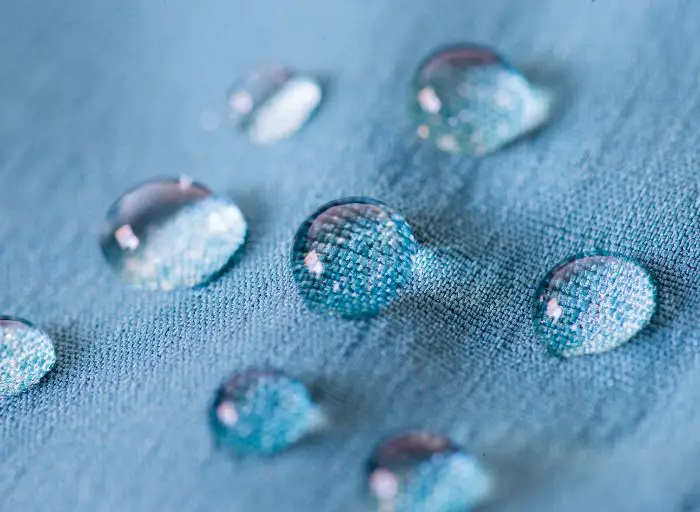
One automobile component prone to stains, color fading, and frequent replacement due to wear and tear is the interior, upholstery, and carpet. Consequently, selecting the right product to protect fabrics is a concern for many drivers.
The two fabric protectors that stand out now are 303 Fabric Guard and Scotchgard. So, what product would be the finest option to safeguard the interior fabric of a car? 303 Fabric Guard vs Scotchgard.
In short, both fabric protectors are great at defending against stains and do not change the fabric color. However, 303 provides longer-lasting fabric protection, while Scotchgard is easier to apply.
Table of Contents
What Is a Fabric Protector and How Does It Work?
A fabric protector is a product designed to help prevent damage to the fabric from spills, stains, and other types of soiling. Fabric protectors create a barrier between the fabric and the outside world, making it easier to clean and maintain the fabric over time.
Fabric protectors work by coating the fibers of the fabric with a protective layer. This layer helps to repel liquids and prevent them from soaking into the fabric, which can cause stains and other types of damage. When spills and other types of soiling occur, they will bead up on the fabric’s surface instead of penetrating the fibers.
Different fabric protectors are available, but most work by using either a silicone-based or fluorochemical-based formula. Silicone-based formulas are more commonly used on natural fibers like cotton and wool, while fluorochemical-based formulas are typically used on synthetic fibers like polyester and nylon.
303 Fabric Guard: What Is It?

Before it gained popularity as a fabric protector for automobile interiors, 303 Fabric Guard was widely used as a fabric protector for outside furniture.
303 Fabric Guard may apply a solid coating to fabrics that will repel water and stop even the worst stains while keeping them fresh, soft, colorful, and breathable. Additionally, it is utilized to maintain the cleanliness of covers and carpets. Even the seams of a convertible top can be treated with it to stop wicking.
This product also restores lost water and stain characteristics to levels equal to those found directly from the factory when used on clean, dry fabrics.
Pros:
- It shields your fabric from fading, discoloration, disintegration, and UV deterioration.
- It can be used on a variety of fabrics.
- Reapplication is not necessary for three years.
What is Scotchgard?
One of the first fabric protectors on the market, Scotchgard, has been produced by 3M Corporation for more than 70 years.
A fabric surfactant called Scotchgard will prevent the material from adhering to the shield it has built up. So when something is dropped on your car’s fabric, it serves as an invisible barrier to protect the filth from sticking to it without the need for washing. As a result, you won’t subject the fabric surface to long-lasting stains from dirt.
When used properly, Scotchguard will significantly increase your odds of avoiding contact with most common home liquids, including juice, wine, and most sodas. While the producer can’t promise it will remove all stains, it lowers the likelihood that minor mishaps will result in lasting harm.
Pros:
- Excellent spill resistance
- High quality
- A wide range of applications and surfaces
- Saturate fast
303 Fabric Guard vs Scotchgard
The Similarities
Since both 303 Fabric Guard and Scotchgard are fabric protection solutions, they share some similar characteristics as below:
- Maximum defense against stains on fabrics from liquids, dirt, and pollutants
- Protect fabrics, so it always looks fresh and clean and save time on cloth washing
- They are risk-free and won’t negatively impact people, kids, or pets.
- They do not alter the fabric’s color or look.
Note: A professional should apply both solutions; otherwise, you risk being improperly protected or affecting the carpet’s texture. You’ll be pleasantly pleased with how successful it can be in keeping your materials at their best.
Here is a table comparison:
| Features | 303 Fabric Guard | Scotchgard |
| Formulation | Water-based | Fluorochemical-based |
| Intended Use | Outdoor fabrics exposed to water and oil-based stains | Indoor fabrics prone to spills and stains |
| Application | Spray and air-dry | Spray, then brush into fibers |
| Frequency of Reapplication | Every 6-12 months or after cleaning | Every 6-12 months or after cleaning |
| Safety | Non-toxic when dry | Non-toxic when dry |
Key Variations
1. Scotchgard can’t compare to 303 Fabric Guard for long-lasting fabric protection

The fabric’s resilience is one of the main distinctions between these two goods. A high-tech fabric guard called 303 Fabric Guard offers protection under challenging circumstances for up to three years. Sunbrella also recommends this product.
On the other hand, Scotchgard is a silicone textile protector that provides defense for just a few months. 303 Fabric Guard shields your fabric better than Scotchgard against UV deterioration, filth, degradation, and fading in addition to being waterproof.
2. Scotchgard is simpler to use than 303 Fabric Guard
Scotchgard takes pride in being simple to use, and customers frequently gush about how quick and simple it is to apply.
Anyone may use this product at home and find it extremely simple because it has comprehensive instructions.
3. Scotchgard dries faster than 303
Additionally, Scotchgard dries far more quickly than the 303 Fabric Guard. So when you spray this product on clothes, you can touch your hands after a while. Additionally, it does not alter the fabric’s look or appearance.
303 Fabric Guard is Suitable for Whom?
Do you reside in a region with harsh winters or rainy seasons? The best fabric protector for your car is 303 Fabric Guard in such cases.
Thanks to their powerful and long-lasting composition, your car seats and mats will receive up to three years of protection from water, stains, and pollutants. The best fabric protector is also available for people who frequently work with easily spillable goods.
Scotchgard Fabric Protector is for Whom?
Ordinary drivers concerned about coffee, soda, or tea spills destroying the interior of their automobiles were the target market for Scotchgard.
Parents who adore their kids and their cars will find this fabric protection the perfect solution. It is simple to use, making it ideal for those without prior experience in such endeavors.
Frequently Asked Questions
#1 What is the difference between 303 Fabric Guard and Scotchgard?
303 Fabric Guard is a water-based formula used on outdoor fabrics to protect against water and oil-based stains. Scotchgard is a fluorochemical-based formula used on indoor fabrics to protect from water- and oil-based stains. 303 Fabric Guard is applied by spraying and air-drying, while Scotchgard is brushed into the fibers after spraying.
#2 How often should I reapply 303 Fabric Guard or Scotchgard?
The frequency of reapplying 303 Fabric Guard or Scotchgard depends on several factors, including the type of fabric, the usage level, and exposure to the elements. In general, it is recommended to reapply the fabric protector every 6 to 12 months or after each cleaning to maintain the level of protection. However, for outdoor fabrics exposed to harsh weather conditions, it may be necessary to reapply more frequently, especially in areas with high humidity or frequent rain.
#3 Are 303 Fabric Guard and Scotchgard safe for children and pets?
303 Fabric Guard and Scotchgard are generally safe for children and pets once completely dried. Both products are formulated to be non-toxic and safe for use on fabrics that come into contact with the skin.
#4 Are there any environmental concerns with using 303 Fabric Guard or Scotchgard?
303 Fabric Guard and Scotchgard contain chemicals that can negatively affect the environment if not used and disposed of properly. These chemicals can persist in the environment and harm aquatic life and other wildlife.
Both products are designed to be used in a well-ventilated area and should be allowed to dry completely before use.
Check out This Video for Applying 303 to A Convertible Top!
Conclusion
The two most popular fabric, carpet, and cushion protection products available right now are 303 Fabric Guard and Scotchgard. They will assist automobile owners in saving time on fabric cleaning and maintaining the fabric as new because they offer good fabric protection, are reasonably priced, and are simple to apply.
Hi everyone, My name is Ollie Barker.
As a seasoned auto expert I have 25 years of experience working in repair and detailing shops. I love to share my tips & tricks to all car lovers, so that’s why I’m here at Automotive Gearz publishing my content, sharing my passion. Also, I’ve been giving my recommendations on which products are the best to have on the market. I always thought it was hard to pick the right part, so hopefully I can make that a bit easier for you.
Hope you enjoy your time on my little blog!







